5.5: Build My Healthy Relationships
- Page ID
- 2382
\( \newcommand{\vecs}[1]{\overset { \scriptstyle \rightharpoonup} {\mathbf{#1}} } \)
\( \newcommand{\vecd}[1]{\overset{-\!-\!\rightharpoonup}{\vphantom{a}\smash {#1}}} \)
\( \newcommand{\id}{\mathrm{id}}\) \( \newcommand{\Span}{\mathrm{span}}\)
( \newcommand{\kernel}{\mathrm{null}\,}\) \( \newcommand{\range}{\mathrm{range}\,}\)
\( \newcommand{\RealPart}{\mathrm{Re}}\) \( \newcommand{\ImaginaryPart}{\mathrm{Im}}\)
\( \newcommand{\Argument}{\mathrm{Arg}}\) \( \newcommand{\norm}[1]{\| #1 \|}\)
\( \newcommand{\inner}[2]{\langle #1, #2 \rangle}\)
\( \newcommand{\Span}{\mathrm{span}}\)
\( \newcommand{\id}{\mathrm{id}}\)
\( \newcommand{\Span}{\mathrm{span}}\)
\( \newcommand{\kernel}{\mathrm{null}\,}\)
\( \newcommand{\range}{\mathrm{range}\,}\)
\( \newcommand{\RealPart}{\mathrm{Re}}\)
\( \newcommand{\ImaginaryPart}{\mathrm{Im}}\)
\( \newcommand{\Argument}{\mathrm{Arg}}\)
\( \newcommand{\norm}[1]{\| #1 \|}\)
\( \newcommand{\inner}[2]{\langle #1, #2 \rangle}\)
\( \newcommand{\Span}{\mathrm{span}}\) \( \newcommand{\AA}{\unicode[.8,0]{x212B}}\)
\( \newcommand{\vectorA}[1]{\vec{#1}} % arrow\)
\( \newcommand{\vectorAt}[1]{\vec{\text{#1}}} % arrow\)
\( \newcommand{\vectorB}[1]{\overset { \scriptstyle \rightharpoonup} {\mathbf{#1}} } \)
\( \newcommand{\vectorC}[1]{\textbf{#1}} \)
\( \newcommand{\vectorD}[1]{\overrightarrow{#1}} \)
\( \newcommand{\vectorDt}[1]{\overrightarrow{\text{#1}}} \)
\( \newcommand{\vectE}[1]{\overset{-\!-\!\rightharpoonup}{\vphantom{a}\smash{\mathbf {#1}}}} \)
\( \newcommand{\vecs}[1]{\overset { \scriptstyle \rightharpoonup} {\mathbf{#1}} } \)
\( \newcommand{\vecd}[1]{\overset{-\!-\!\rightharpoonup}{\vphantom{a}\smash {#1}}} \)
\(\newcommand{\avec}{\mathbf a}\) \(\newcommand{\bvec}{\mathbf b}\) \(\newcommand{\cvec}{\mathbf c}\) \(\newcommand{\dvec}{\mathbf d}\) \(\newcommand{\dtil}{\widetilde{\mathbf d}}\) \(\newcommand{\evec}{\mathbf e}\) \(\newcommand{\fvec}{\mathbf f}\) \(\newcommand{\nvec}{\mathbf n}\) \(\newcommand{\pvec}{\mathbf p}\) \(\newcommand{\qvec}{\mathbf q}\) \(\newcommand{\svec}{\mathbf s}\) \(\newcommand{\tvec}{\mathbf t}\) \(\newcommand{\uvec}{\mathbf u}\) \(\newcommand{\vvec}{\mathbf v}\) \(\newcommand{\wvec}{\mathbf w}\) \(\newcommand{\xvec}{\mathbf x}\) \(\newcommand{\yvec}{\mathbf y}\) \(\newcommand{\zvec}{\mathbf z}\) \(\newcommand{\rvec}{\mathbf r}\) \(\newcommand{\mvec}{\mathbf m}\) \(\newcommand{\zerovec}{\mathbf 0}\) \(\newcommand{\onevec}{\mathbf 1}\) \(\newcommand{\real}{\mathbb R}\) \(\newcommand{\twovec}[2]{\left[\begin{array}{r}#1 \\ #2 \end{array}\right]}\) \(\newcommand{\ctwovec}[2]{\left[\begin{array}{c}#1 \\ #2 \end{array}\right]}\) \(\newcommand{\threevec}[3]{\left[\begin{array}{r}#1 \\ #2 \\ #3 \end{array}\right]}\) \(\newcommand{\cthreevec}[3]{\left[\begin{array}{c}#1 \\ #2 \\ #3 \end{array}\right]}\) \(\newcommand{\fourvec}[4]{\left[\begin{array}{r}#1 \\ #2 \\ #3 \\ #4 \end{array}\right]}\) \(\newcommand{\cfourvec}[4]{\left[\begin{array}{c}#1 \\ #2 \\ #3 \\ #4 \end{array}\right]}\) \(\newcommand{\fivevec}[5]{\left[\begin{array}{r}#1 \\ #2 \\ #3 \\ #4 \\ #5 \\ \end{array}\right]}\) \(\newcommand{\cfivevec}[5]{\left[\begin{array}{c}#1 \\ #2 \\ #3 \\ #4 \\ #5 \\ \end{array}\right]}\) \(\newcommand{\mattwo}[4]{\left[\begin{array}{rr}#1 \amp #2 \\ #3 \amp #4 \\ \end{array}\right]}\) \(\newcommand{\laspan}[1]{\text{Span}\{#1\}}\) \(\newcommand{\bcal}{\cal B}\) \(\newcommand{\ccal}{\cal C}\) \(\newcommand{\scal}{\cal S}\) \(\newcommand{\wcal}{\cal W}\) \(\newcommand{\ecal}{\cal E}\) \(\newcommand{\coords}[2]{\left\{#1\right\}_{#2}}\) \(\newcommand{\gray}[1]{\color{gray}{#1}}\) \(\newcommand{\lgray}[1]{\color{lightgray}{#1}}\) \(\newcommand{\rank}{\operatorname{rank}}\) \(\newcommand{\row}{\text{Row}}\) \(\newcommand{\col}{\text{Col}}\) \(\renewcommand{\row}{\text{Row}}\) \(\newcommand{\nul}{\text{Nul}}\) \(\newcommand{\var}{\text{Var}}\) \(\newcommand{\corr}{\text{corr}}\) \(\newcommand{\len}[1]{\left|#1\right|}\) \(\newcommand{\bbar}{\overline{\bvec}}\) \(\newcommand{\bhat}{\widehat{\bvec}}\) \(\newcommand{\bperp}{\bvec^\perp}\) \(\newcommand{\xhat}{\widehat{\xvec}}\) \(\newcommand{\vhat}{\widehat{\vvec}}\) \(\newcommand{\uhat}{\widehat{\uvec}}\) \(\newcommand{\what}{\widehat{\wvec}}\) \(\newcommand{\Sighat}{\widehat{\Sigma}}\) \(\newcommand{\lt}{<}\) \(\newcommand{\gt}{>}\) \(\newcommand{\amp}{&}\) \(\definecolor{fillinmathshade}{gray}{0.9}\)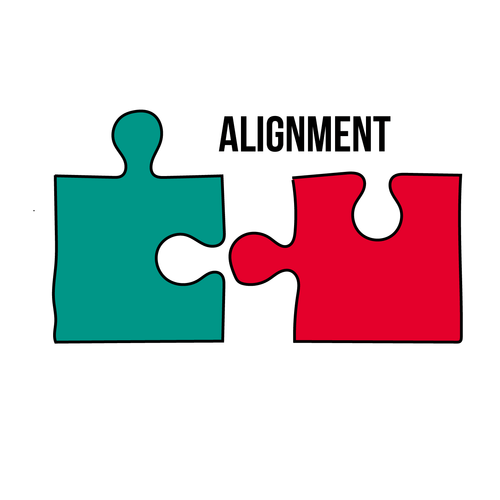
National Health Education Standards (NHES)
- 1.12.9 Analyze the potential severity of injury or illness if engaging in unhealthy behaviors, such as unhealthy relationships.
- 7.12.2 Demonstrate healthy practices and behaviors, such as engaging in a healthy relationship, that will maintain or improve the health of self and others.
Wellness Guidelines
- Increase conflict resolution skills

- Instruction: In the group or think pair share format, have participants discuss the following questions. Acknowledge those who have progressed toward their goal(s) and encourage anyone who wants to change or modify their goal to get 1:1 support.
- Share: Let’s discuss our SMART Goals.
-
- How is it going with your current SMART goal?
- What are some ways you can improve progress toward your goal? (Grows)
- What are some ways you are doing well with progress towards your goal? (Glows
GUIDELINE: Increase Conflict Resolution Skills
- Share: What guideline do you think is related to today’s lesson? Who has a SMART Goal related to this guideline?
- Instruction: Select one activity.
- Guideline Popcorn: The group lists all 8 guidelines rapidly in popcorn format.
- Guideline Charades: Divide participants into groups and assign each a guideline. Each group has to silently act out the guideline for the rest to guess.
- Two Truths and One Lie:
- Truth 1: Conflict is when people disagree on an issue or can’t get along.
- Truth 2: While conflicts and disagreements are an inevitable part of life, they do not have to lead to violence.
- Lie: If you don't suffer physical harm, it's not abuse.
- Share: There are many forms of abuse, and not all of them are physical. For example, constantly saying mean or degrading things about someone constitute emotional abuse.
- Questions to discuss and/or journal:
- Which relationship of yours is the strongest/healthiest? Why do you think it is the strongest/healthiest?
- Which relationship of yours could use improvement? Why do you think needs to be improved? How do you think you can go about improving it?
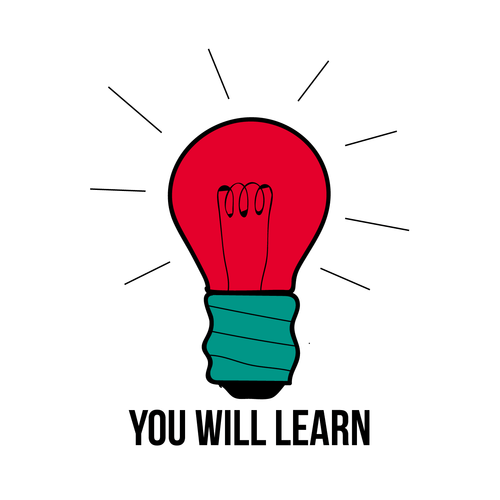
- How to identify unhealthy and healthy relationships and improve relationships in your life.
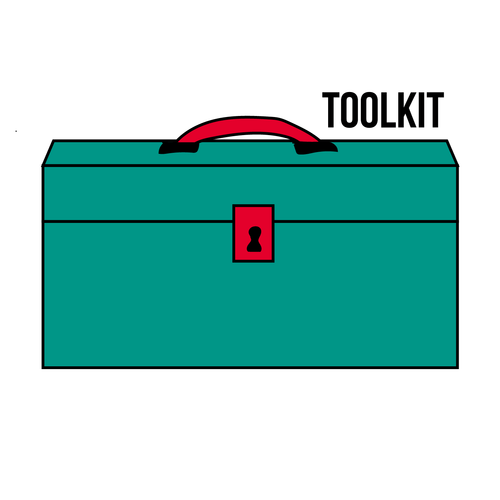
- Worksheets
- Slide presentation
- Four (4) Signs: Emotional, Economic, Physical & Sexual.
- Tape or push-pins to hang signs
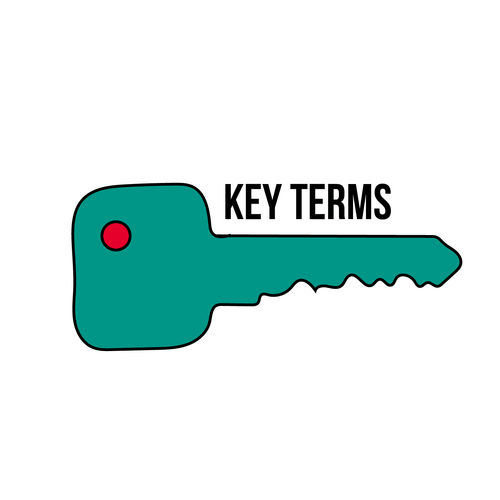
[As defined by Merriam-Webster Learner’s Dictionary, n.d.; Center For Relationship Abuse Awareness, n.d.]
- Relationship: The way in which two or more people or things are connected.
- Relationship abuse: A pattern of abusive and coercive behaviors used to maintain power and control over a former or current intimate partner.
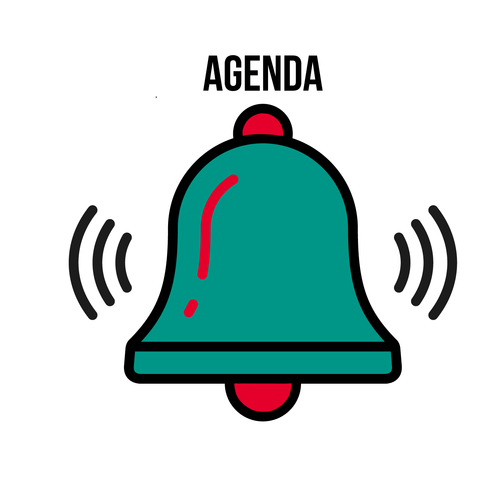
- Do Now
- Unhealthy vs. Healthy Relationships
- Relationship Situations
- What Do You Want In A Relationship?
- Exit Ticket
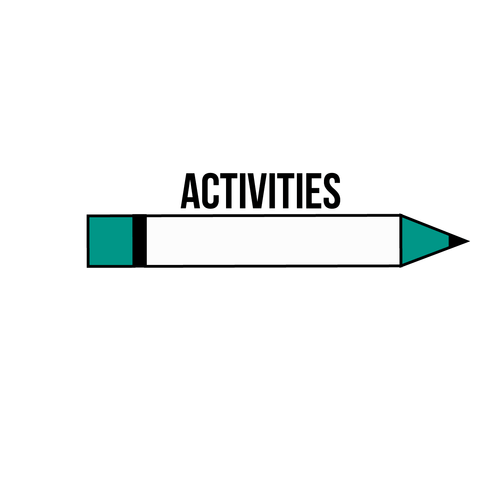
Do Now:
- Share:
- Everyone has at least one (1) relationship in his/her life.
- A relationship is a way in which two (2) or more people or things are connected.
- Relationships in your life may include but are not limited to, your friends, classmates, co-workers, roommates, neighbors, relatives, and significant others.
- Everyone has at least one (1) relationship in his/her life.
- Instruction:
- Have participants answer the following questions on their worksheet. Examples of responses are listed in the next activity.
- What is the relationship?
- What are some characteristics of unhealthy relationships?
- What are some characteristics of healthy relationships?
Good to Know: Healthy vs. Unhealthy Relationships
- Instruction:
- Have participants share out answers to the Do Now questions.
- As participants share answers, record on a board, projector or flipchart paper and discuss the answers with the entire group. Responses may include:
|
Unhealthy Relationships |
Healthy Relationships |
|
Feeling that you always put the person before yourself by neglecting yourself |
Maintaining honesty, trust, and respect for each other |
|
Feeling as if you lack privacy (may be forced to share everything with the other person) |
Feeling secure and comfortable |
|
Not resolving conflicts fairly |
Allowing and encouraging relationships with others |
|
The other person attempts to control and/or criticizes how you behave |
Resolving conflicts fairly |
|
Feeling as if there’s a lack of respect for your friends/family |
Maintaining and respecting one’s self-esteem independent of the relationship |
|
There’s an unequal control of resources (food, money, home, car, etc.) |
Having the option for privacy or personal space |
|
Feeling worried when you disagree with the other person |
Respecting each other’s boundaries |
|
Feeling pressured to quit activities you usually/used to enjoy |
Having activities apart from one another |
|
Pressuring the other person into agreeing with you or changing to suit you better |
Not feeling worried about potential violence in the relationship |
|
Having to justify your actions (e.g., where you go, who you see) |
Feeling as if you can express yourselves to one another without fear of consequences |
Source: University of Washington Hall Health Center. (2014). Healthy vs. unhealthy relationships. Retrieved From: depts.washington.edu/hhpccweb/health-resource/healthy-vs-unhealthy-relationships/
- Instruction:
- Share any tips (or examples of responses) not covered by participants.
- Share:
- In some cases, unhealthy relationships can involve relationship abuse, or a pattern of abusive and coercive behaviors used to maintain power and control over a former or current intimate partner (Center For Relationship Abuse Awareness, n.d.).
- There are four (4) common types of relationship abuse (Center For Relationship Abuse Awareness, n.d.):
- Emotional: Doing or saying something as a means of hurting, without necessarily being physical. Trying to hurt other’s feelings as a means of controlling or gaining power. Also called mental, psychological or verbal abuse.
- Economic: Using economic or financial means to control another person’s activities or to undermine opportunities to become financially independent in order to make him or her dependent on the abuser.
- Physical: Any behavior meant to cause harm, to restrain, or control the ability to move or be free.
- Sexual: Any sexual behavior that uses physical force, coercion or manipulation to make unwanted advances. Includes sexual harassment.
- What are some common issues people may face in their relationships?
- Misunderstanding one another
- Communication issues (not understanding the other's expectations, not sharing true feelings, etc.)
- Not paying attention to one another
- Unable to see from the other’s perspective
- Trust issues (previous betrayals, lies, etc.)
- Disrespecting one another or taking each other for granted
- What are some general strategies to maintain healthy relationships?
- Communicating honestly and openly
- Giving each other personal space
- Trying to understand the other person’s perspective
- Keeping your promises
- Apologizing when necessary and forgiving mistakes
- Clarifying expectations
- Giving them your attention when you are spending time together
- Supporting them
- Showing your respect and appreciation for them
- Reminding them you care
- Share:
- Those who are victims of relationship abuse can suffer psychologically and physically.
- There are resources to help people leave abusive relationships, safely.
- Confide in someone, such as a parent, trusted adult, health provider, or friend. Let them support you, help you end the relationship and stay safe.
- Another resource you may want to consider is calling the National Domestic Violence Hotline, which can be reached at 1-800-799-7233 (SAFE).
- You can also text ‘LOVEIS’ to 22522 to get help from LoveIsRespect a national dating abuse and domestic violence helpline.
Hands-On: Relationship Situations
- Set Up:
- Hang the following four (4) signs in each corner of the room: Emotional, Economic, Physical & Sexual.
- Project the situations to be read out loud on the board, so participants can follow along while you read them.
- Instruction:
- Inform participants that you will read a relationship situation.
- For each situation, participants can categorize what type of relationship abuse that situation is and move to the corner of the room.
- Give participants an opportunity to discuss why they decided to categorize each situation with which type of relationship abuse.
- Some situations may be more than one (1) type of abuse. If that’s the case, then participants can stand in between two (2) corners/signs.
|
Situation |
Relationship Abuse Type |
|
Max: “I’ve cheated on my boyfriend a few times, but they were mistakes. He kind of knows about them, but he never brings it up, so I guess it doesn’t bother him. Lately, I’ve been wondering if I should fess up about what I’ve done.”
|
Emotional because Max is hurting his boyfriend emotionally because he is hurting his boyfriend’s feelings.
|
|
Rheanna: “My roommate, Daniel, has been blasting music late at night, and it’s interrupting my sleep. I feel so tired all the time because of it, and I feel so angry! He’s being so unreasonable and inconsiderate!” |
Emotional because Daniel is mentally hurting Rheanna’s feelings by interrupting her sleep and making her tired. |
|
Monique: “My best friend, Crystal, has been dating this guy Jason, and she thinks she is in love with him. She always pays for him when we go out together. He’s such a player, and I saw him with another girl at the movies, and that girl also took out her money to pay. I’m not sure if I should tell my friend since she really likes him.” |
Economic and emotional because Jason is using Crystal for money by being in a relationship with her. Jason is also emotionally abusing Crystal by hurting her feelings by cheating. |
|
Craig: “I recently lied to my boss. I told her that I finished a project by myself when my co-worker, Raymond, had actually done most of the work. I’m scared that Raymond and my boss will talk and catch me in a lie. But if I tell the truth, I might get fired. I decided to pay $100 to Raymond so he won’t tell my boss.”
|
Economic because Craig is bribing Raymond to not tell their boss with money. |
|
Juan: “My friend Nicole has been acting weird lately. I sneaked up behind her to scare her before school today. When I touched her shoulder it felt displaced. I know she and her girlfriend were arguing after school yesterday. I asked if Nicole wanted to hang out and she said she couldn’t because her girlfriend would get mad.” |
Physical and emotional because Juan found out that Nicole’s girlfriend is abusing her by hurting Nicole’s body and not letting her hang out with her friends which is hurting Nicole’s feelings. |
|
Ming: “My cousin, Ling has been starting to date this much older guy. She’s 16, and he’s 21. She says she likes him because he’s more mature than the boys our age. He buys her stuff, and he has a car and takes her out. Ling is having sex but doesn’t want to do it all the time, when Ling refuses, he hurts her arm. I don’t know if I should tell my aunt/uncle or my cousin what I think.” |
Sexual and physical because Ming’s cousin Ling is dating an older guy that is making her feel special but in return, she is doing sexual behaviors even though she doesn’t want to. Ling’s boyfriend is also harming her to control the relationship. |
|
Raven: “I saw Brent with a black eye after football practice. I asked if he was alright, but he said the football players said I’ll be cool and be friends with them. I want to tell the coach, what do you think I should do?” |
Physical because Brent has a black eye from the football team because he wants to be cool and be friends with them. The football team is controlling and causing harm to Brent’s body. |
|
James: “My boss, Helen has been asking me to work late with her on a project. She has been buying us dinner and been touching my shoulder, and face. When I told her I felt uncomfortable, she said don’t be shy. When I told her to stop, she said she was going to fire me. I don’t know what to do. |
Sexual because James is being sexually abused by his boss Helen because she is making unwanted advances while at work. |
Real World Relevance: What Do You Want in a Relationship?
- Instruction:
- Have participants circle words they would want in their relationships on their worksheets.
- Share:
- Think about your relationships with friends, classmates, co-workers, roommates, neighbors, relatives, and significant others.
- Take a look at the words that describe what you want in your relationships on the handout.
- Why did you choose the words you chose? Example responses can include:
- Honesty: I want my co-worker to do their part of the job to get our task done.
- Respect: I want to be respected by my parents rather than treating me like I am irresponsible, which means I also have to give them respect as well.
- Compromise: I want to be able to compromise with my significant other and they can compromise with me.

Exit Ticket:
- Instruction:
- Have participants write on their worksheet or share out loud the following question(s).
- What is one (1) relationship you’d like to improve?
- What are some ways you will try to improve this relationship?
- Have participants write on their worksheet or share out loud the following question(s).
Bibliography
- Center For Relationship Abuse Awareness. (n.d.). Tactics of abuse. Retrieved From: http://stoprelationshipabuse.org/edu...ypes-of-abuse/
- Merriam-Webster Learner’s Dictionary. (n.d.). Relationship. Retrieved From: http://www.learnersdictionary.com/definition/relationship
- University of Washington Hall Health Center. (2014). Healthy vs. unhealthy relationships. Retrieved From: depts.washington.edu/hhpccweb/health-resource/healthy-vs-unhealthy-relationships/
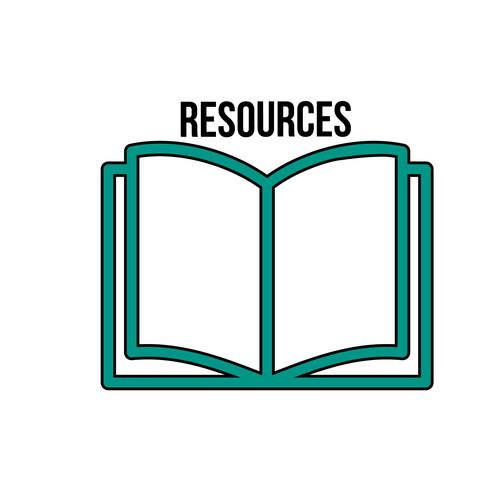
- TEDx Talks. (2015). Skills for Healthy Romantic Relationships – Joanne Davila. Retrieved From: youtu.be/gh5VhaicC6g
- Practical Psychology. (2017). 10 Habits of Healthy Relationships. Retrieved From: youtu.be/tFlDWciH5fQ

